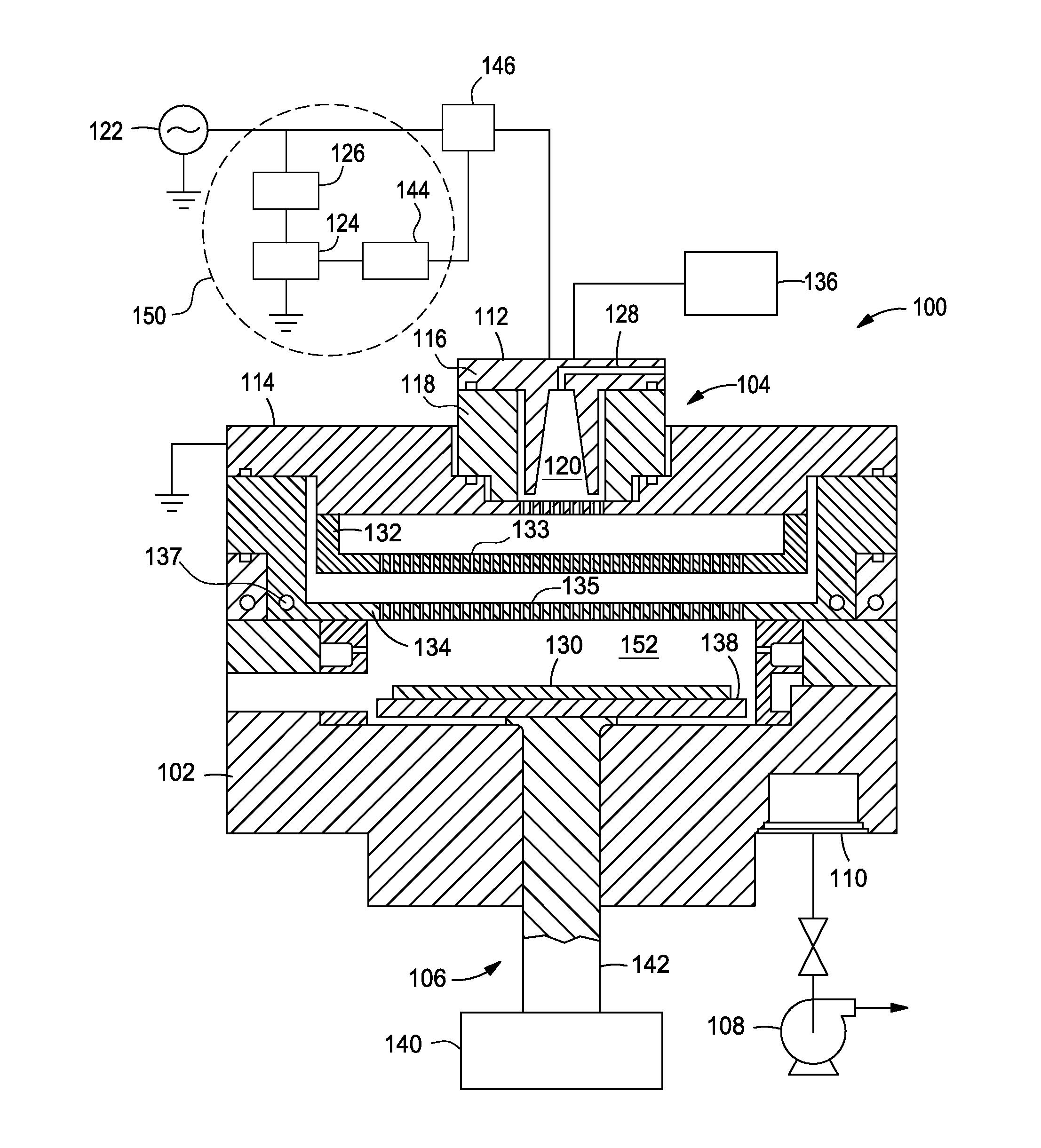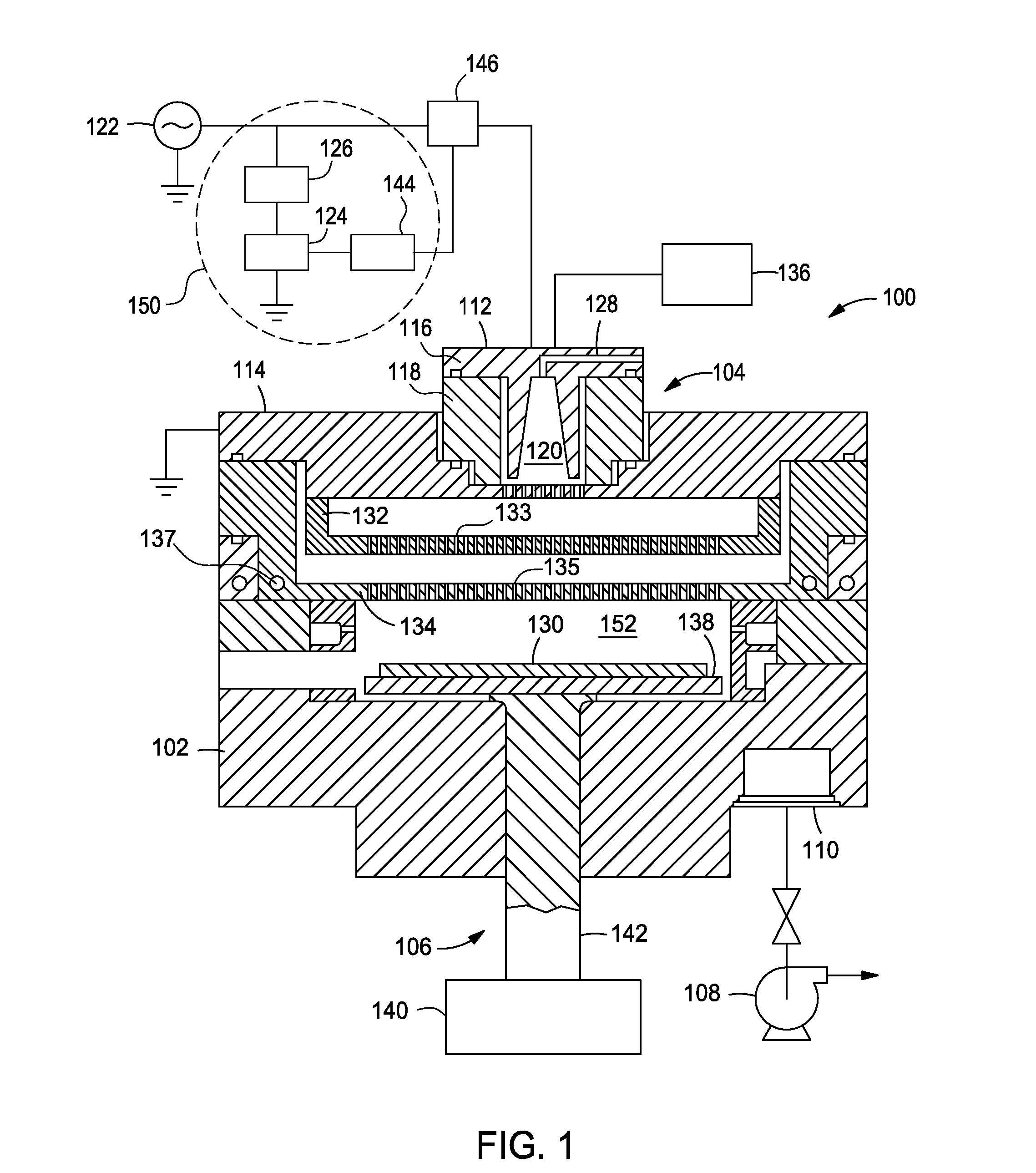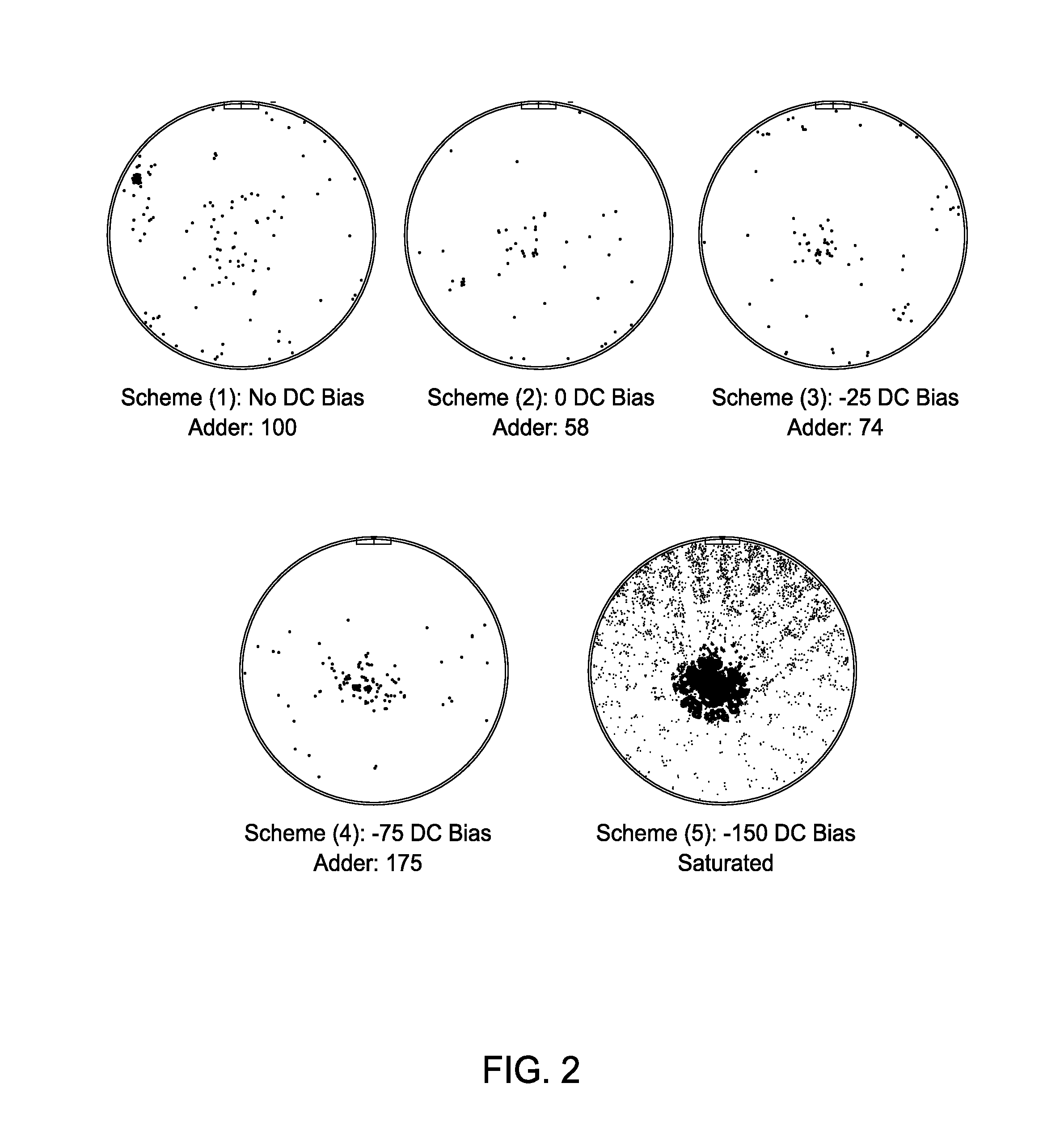Particle generation suppresspr by DC bias modulation
a technology of dc bias modulation and particle generation, which is applied in the direction of plasma technique, electric discharge lamp, coating, etc., can solve the problems of unwanted particle contamination on the substrate surface, ion bombardment of the powered electrode, and the portion of the protective coating layer may fall off, so as to reduce particle generation and reduce particle generation in the processing chamber
- Summary
- Abstract
- Description
- Claims
- Application Information
AI Technical Summary
Benefits of technology
Problems solved by technology
Method used
Image
Examples
Embodiment Construction
[0018]Embodiments of the present disclosure generally relate to an apparatus and method for reducing particle generation in a processing chamber. The method generally includes generating a plasma between a top electrode and a bottom electrode, and applying a zero DC bias voltage to the top electrode so that the top electrode is operated with a constant zero DC bias voltage during a film deposition process. In another embodiment, an apparatus for processing a substrate is provided. The apparatus generally includes a lid assembly disposed above a chamber body. The lid assembly has a top powered electrode and a grounded bottom electrode disposed parallel to the top powered electrode, defining a plasma volume therebetween. A low-pass filter is disposed between the lid assembly and a RF power supply and configured to direct DC bias to ground so that the top electrode (RF hot) is operated at a constant zero DC bias voltage during a film deposition process.
[0019]Applying zero DC bias volta...
PUM
| Property | Measurement | Unit |
|---|---|---|
| power | aaaaa | aaaaa |
| frequency | aaaaa | aaaaa |
| frequency | aaaaa | aaaaa |
Abstract
Description
Claims
Application Information
 Login to View More
Login to View More - R&D
- Intellectual Property
- Life Sciences
- Materials
- Tech Scout
- Unparalleled Data Quality
- Higher Quality Content
- 60% Fewer Hallucinations
Browse by: Latest US Patents, China's latest patents, Technical Efficacy Thesaurus, Application Domain, Technology Topic, Popular Technical Reports.
© 2025 PatSnap. All rights reserved.Legal|Privacy policy|Modern Slavery Act Transparency Statement|Sitemap|About US| Contact US: help@patsnap.com



